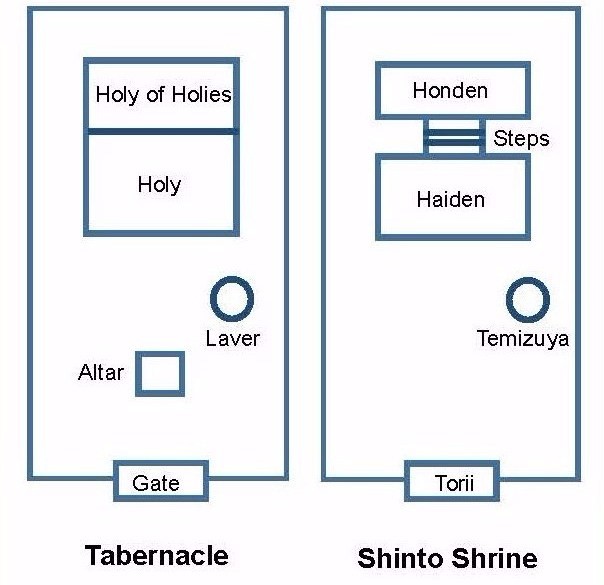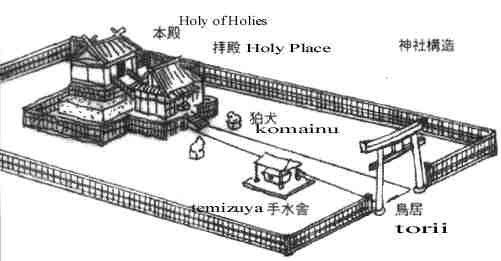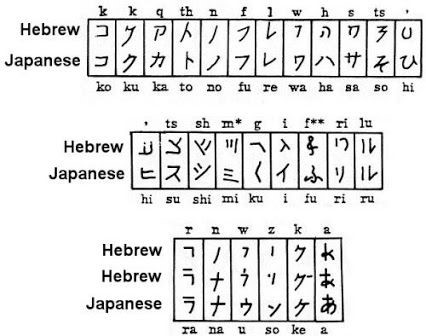What is the Japanese-Jewish common ancestry theory?
The Japanese-Jewish common ancestry theory is a fringe theory that argues that Japanese roots are from the ten lost tribes of Israel. This theory is not widely recognised, and most people may never have heard of it. However, researchers who have been studying the ten lost tribes of Israel discovered too many similarities between Japanese and Jewish cultures, such as language, rituals, etc. They have argued that some of the Japanese traditions possibly originate from ancient Israel since there were too many mysterious correspondences between Japanese and Hebrew that cannot be explained by coincidence. Even a Japanese TV show introduced this common ancestry theory in Japan. So, is this theory just a fantasy or a possibility?
There are over 500 similarities found between these two cultures. This article introduces some of the similarities rather than arguing the correctness of the theory.
Similarities of Japanese and Israeli cultures
The structure of the Japanese Shinto shrine and the God’s Tabernacle of Ancient Israel
Japanese Shinto shrines and the Israel tabernacles are similar in many ways. The insides of Japanese shrines are divided into two parts, and so do Hebrew tabernacles: the Holy Place (Haiden) and the Holy of Holies (Honden). Nobody except Shinto priests and special ones can enter inside the Holy Place and the Holy of Holies. Therefore, the Japanese often pray in front of its Holy Place. This custom is the same as the Israel tabernacle (web.archive.org, 2008).
The location of the Japanese Holy of Holies is generally located in the far west or far north of the shrine, and the Israeli Holy of Holies is located in the far west of the temple. In the Japanese Shinto shrine, the Holy of Holies is located higher than the Holy Place, and there are steps between them. The Israel temple constructed by Solomon was said to have steps between them as well.
Two statues of lions known as ‘komainu’ sit in front of the Japanese shrine as guards. However, no lions existed in the early history of Japan; even the statues of lions have been placed in the shrine since ancient times. The figures of lions have been proven to have originated from the Middle East. In the palace of Solomon, there were also statues or relieves of lions.
Temizuya, a place to wash their mouth and hands to purify themselves, is located after going through the torii in the shrine. In Israel tabernacle, it has a laver, which also has the same function as temizuya.
The significant difference regarding the structure of the Shinto shrines and ancient Israel temple is that the burning altar for animal sacrifices does not exist in a Japanese shrine (web.archive.org, 2008).


Japanese and Hebrew language
The Japanese language has many words similar to Hebrew in both meaning and sound. For example, Japanese and Hebrew characters are incredibly similar. Some of them are almost the same as shown below.

In Japanese folk songs, there are many words that the Japanese cannot understand. For example, ‘Soran-Bushi’ is a folk song for fishermen in Hokkaido, Japan. The lyrics ‘Yaren Soran Soran Soran’ is the famous part of the song. However, the Japanese cannot understand the meaning of this folk song even the song has been passed down from generation to generation. According to the ambassador of Israel, Mr. EliCohen, ‘Yaren’ means ‘to sing a song and enjoy it’ and ‘Soran’ means ‘Ladder’ in Hebrew. In Japan, fishermen climbed up the ladder and looked at the approach of herring shoal from a skylight and singing the song and enjoyed each other in the past. (www.youtube.com. n.d.)
In addition, when the Japanese carry Omikoshi in the festival, they shout ‘Essa! Essa!’ there is the same word in Hebrew, meaning ‘carry’ or ‘pick up.’ Moreover, there are many Japanese words that have the same meaning as Hebrew. For example,
| Japanese | Definition (English) | Hebrew | Definition (English) |
| Arigatou | Thank you | Ari Gato | We are lucky |
| Anta | You | Ata | You |
| Samurai | Samurai in Japan | Shamurai | Guardian |
| Suwaru | Sit down | Suwaru | Rest |
| Aruku | Walk | Haraku | Walk |
| Yakedo | Burn injury | Yakedo | Burn injury |
| Mikado | The emperors of Japan | Mikadoru | A noble person |
With all these interesting similarities and points, it might be interesting to investigate the similarity of Japanese and Hebrew cultures in depth.
Reference:
thechristianbushido. 2017. Japanese & Hebrew similarities – sacred structures. [online] Available at: https://thechristianbushido.wordpress.com/japanese-hebrew-similarities-sacred-structures/ [Accessed 27 Nov. 2021].
web.archive.org. 2008. Israelites Came To Ancient Japan. [online] Available at: https://web.archive.org/web/20080224063624/http://www5.ocn.ne.jp/~magi9/isracame.htm [Accessed 27 Nov. 2021].
www.youtube.com. n.d. The Roots of Japan Were Ancient Israel!? – Part 1of7. [online] Available at: https://www.youtube.com/watch?v=TLc30VSPdgY&t=54s [Accessed 28 Nov. 2021].
